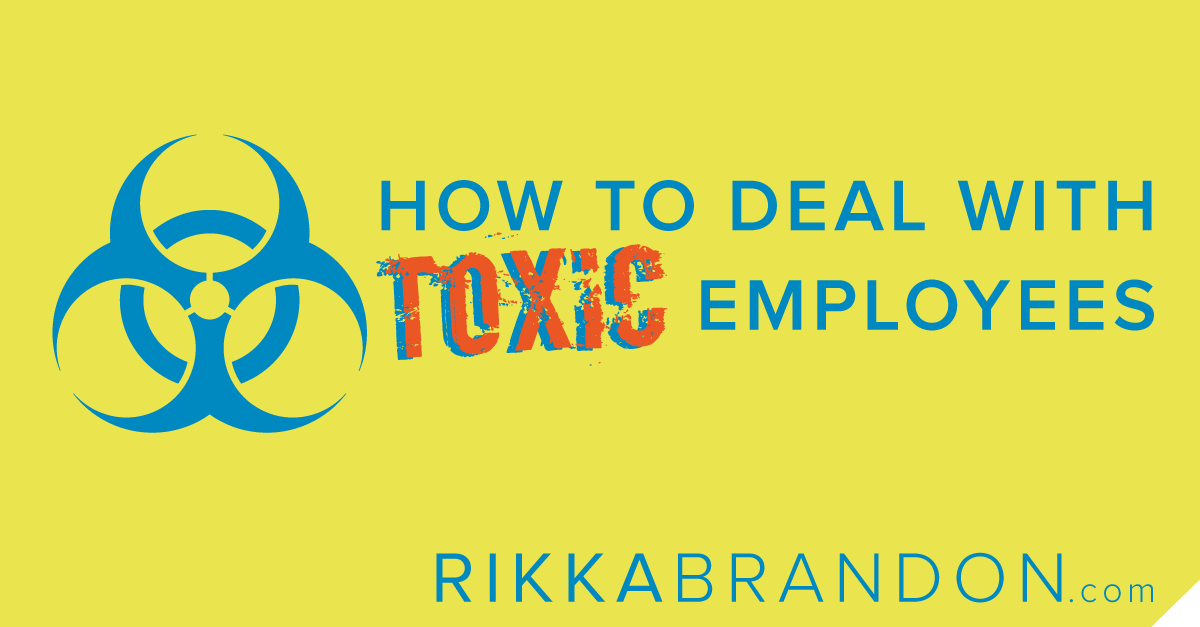If you've been in a leadership role for any length of time, chances are good you've had a nightmare employee.
The “great” employee that everyone loves, but is driving you crazy because it's never enough. They always want more….more time off, more money, more help, the list goes on and on.
The passive aggressive employee who agrees to your face, and then undercuts you behind your back.
The “just enough” employee who never does anything extra and does just enough to avoid getting in trouble.
Even perfectly lovely, usually competent employees have their ups and downs. Few of us are at our best when we’re going through a divorce, dealing with family issues, or struggling with a serious illness.
So what’s a leader to do?

8:30
Of course, addressing toxic behavior is awkward and unpleasant for everyone involved. But if we don’t, we risk losing our best employees (because they’re sick of picking up the slack), diminishing morale and your leadership (because passive-aggressive can be convincing). and inadvertently encouraging bad behavior in other employees (because they see “just enough” getting away with it).
First off, understand why you need to take action.
-
- You are risking your great employees by putting up with this behavior from your mediocre (or worse) employees. Great employees get frustrated (and leave) when they start to feel like the “bad” employee is never going to change or suffer a consequence of their actions.
-
- They are sucking the life out of you and your organization. Toxic employees take up more time + energy than you may realize. You are spending a huge amount of energy putting up with them (or dreading what's going on that you don't know about!)
-
- By allowing it to continue, you are subtly encouraging the behavior. It isn't going to go away unless you address it.
With that said, let’s all put on our grown up pants and schedule a meeting with that employee who’s making everyone crazy.
1. Gather 2-3 examples of the toxic behavior
Before you meet, make sure you can cite a few specific examples of this behavior. It’s not particularly productive to meet with an employee and say “So I've heard that you've been struggling with your temper lately. Just, you know, in general.”
2. Schedule the meeting in a private place
No one wants to be chastised in front of their coworkers. Your employee will appreciate that you respect them enough to have this conversation in private.
3. Start with what they’re doing right
There’s a reason the sandwich technique is a classic. You’re having this conversation because you value this employee and you want to keep them on your team, and you want to communicate that through your approach. It’s easier to hear criticism from someone when you know they respect and value you.
4. Address the toxic behavior directly
Of course you want to be diplomatic and professional, but don’t beat around the bush and call it diplomacy. “I’ve heard from the team that you’ve been struggling to control your temper. You’ve yelled at Sherry twice in the last week and I saw you throw your keyboard on the floor,” works better than “How are you feeling? Have you been struggling with anything lately?”
5. Realize they’ll probably be defensive and/or super embarrassed
Know that there will probably be blushing, stammering, and maybe tears. That doesn't mean you did the wrong thing or that you should have stayed quiet. Make peace with the fact that this will be uncomfortable for everyone involved. That’s okay!
6. Create a plan for the future
Now that you’ve both acknowledged the issue, how are they going to prevent these problems from reoccurring? Help them create a plan of action, whether that involves taking a training course on the software that triggers tantrums or working through personal issues outside the office.
A really good way to prevent things from getting toxic in the first place? Check in with your staff (here’s how). You’d be amazed what you can learn from one simple conversation!
Do you like helping people? Me Too! That's why I provide this great content to help you grow your team! Now, help me (and your friends) by sharing this great information on LinkedIn, Twitter, Facebook, and Pinterest by using the super-easy share buttons below. Ahh, thank you – that feels good.


Recent Comments